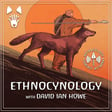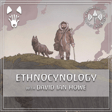
Encore - Fantastic Domesticates and Where to Find Them - Dogs - Ruins 63
For this episode of Just the Boyz, we kick off our series on animal domesticates, starting with the oldest known domesticated animal: the dog. We are fortunate to have David as a one of the hosts as he is one of the leading public scholars when it comes to the relationship between dogs and humans throughout human history. We chat about the earliest evidence for dog domestication, the leading theories behind Howe and why dogs were domesticated, and delve into a discussion about the Siberian Fox Domestication experiment and animal research ethics.
Literature recommendations
1) "Dogs": Darcey Morey
2) "The Social Dog: Behavior and Cognition" Kominski and Marshall-Pescini
3) “Dogs: Archaeology Beyond Domestication" Bethke and Burtt
4) "Inside of a Dog: What Dogs See, Smell, and Know" Alexandra Horowitz
Transcripts
- // Message for Zencastr (delete this, link the episode and insert the number in the text below):
For rough transcripts of this episode go to https://www.archpodnet.com/ethnocynology/encore-ruins-63 - For a transcript of this episode, tap the Zencastr icon on in the upper left corner of the Podcast image.
Links:
ArchPodNet
- APN Website: https://www.archpodnet.com
- APN on Facebook: https://www.facebook.com/archpodnet
- APN on Twitter: https://www.twitter.com/archpodnet
- APN on Instagram: https://www.instagram.com/archpodnet
- Tee Public Store: https://www.teepublic.com/stores/archaeology-podcast-network?ref_id=5724






